Starting on the journey of downsizing is like setting sail into a new chapter of life, filled with both challenges and opportunities. This well-crafted 90-day plan is your compass, guiding you step by step through the process, ensuring you don’t miss a beat. From deciding what stays and what goes to packing smart, you’ll find detailed guidance tailored to your needs. Are you ready to discover how this roadmap can transform your move into a seamless adventure?
Key Takeaways
- Begin with a comprehensive inventory of belongings to determine what to keep, donate, or sell.
- Set a clear timeline with weekly tasks for a stress-free downsizing journey.
- Implement a color-coded labeling system to streamline packing and unpacking processes.
- Notify landlords, utility companies, and other relevant parties about your upcoming move.
- Prioritize packing essential items for easy access and smooth transition on move day.
Who this roadmap is for

If you’re a senior or an adult child in Bergen County contemplating the change to a smaller living space, this roadmap is tailored specifically for you.
Downsizing can be overwhelming, but with the right tools, it becomes manageable. Our downsizing checklist provides a thorough guide to guarantee you don’t miss any vital steps. It includes everything from sorting through belongings to deciding what to keep, donate, or sell.
The moving timeline for seniors is designed to reduce stress, offering a clear path from decision to the moving day. Additionally, a strategic packing plan is important; it helps organize your belongings efficiently, making both the move and settling into your new home smoother.
This roadmap respects your journey and supports your change with clarity and care.
90-day timeline at a glance
Starting on a downsizing journey requires a well-structured plan, and this 90-day timeline offers an extensive overview to guide you smoothly through the process. Your 90 day moving plan outlines a clear downsizing schedule, ensuring each week brings you closer to your new home. It’s essential to keep a move day checklist handy, beginning with sorting and categorizing belongings, then gradually booking vendors and scheduling essential tasks.
Here’s a concise overview to keep you on track:
| Week | Task Overview | Key Actions |
|---|---|---|
| 1-3 | Planning Phase | Set goals, create timeline |
| 4-6 | Decluttering | Sort, donate, sell items |
| 7-9 | Vendor Coordination | Book movers, utilities |
| 10-12 | Packing | Label and box non-essentials |
| 13 | Final Preparations | Confirm plans, pack essentials |
Stay organized and approach each step methodically for a seamless shift.
Weeks 12–9: Decide and prepare

In these initial weeks, you’ll set the stage for a smooth changeover by selecting a target move date that aligns with your schedule and any potential commitments.
Begin by taking a thorough inventory of each room, establishing clear rules for what items you’ll donate or sell to streamline the process.
It’s essential to book key vendors early, such as organizers, movers, and junk removal services, to guarantee availability and avoid any last-minute stress.
Pick a target move date
Selecting a target move date is a significant step in your downsizing journey, especially when it comes to ensuring a smooth shift.
Begin by consulting a calendar to identify potential dates, keeping in mind factors like weather, personal commitments, and how to downsize efficiently. Consider whether an estate sale vs consignment is a better fit for your belongings. This decision will impact your timeline, so allow ample time for preparation.
Additionally, check the availability of donation pickup services in Bergen County to streamline the process. By choosing a move date that aligns with your logistical needs, you create a clear timeline that helps reduce stress.
This foresight is essential as you continue your progression into a new, more manageable living space.
Inventory rooms and set donation/sale rules
Begin the downsizing journey by systematically inventorying each room, an essential step that sets the foundation for effective decision-making.
As you move through your home, take note of items that are essential, sentimental, or rarely used. Create a plan for donation, sale, or junk removal in Bergen County to simplify the process.
Establish clear rules: items not used in a year might be candidates for donation or sale. Consider setting up a color-coded system for easy identification—green for keep, yellow for sell, and red for junk removal.
This approach not only organizes your shift but also supports local charities and reduces waste.
With a strategic inventory, you’ll confidently streamline your possessions and prepare for the next phase of downsizing.
Book key vendors (organizer, mover, junk removal)
With a clear inventory and color-coded system in place, the focus now shifts to securing the right vendors to streamline your downsizing process in Bergen County.
Booking key vendors early is essential to guarantee availability and lock in the best rates. Start by researching local organizers who specialize in downsizing; they can assist with sorting and packing efficiently.
Next, contact reputable moving companies to compare services and prices, focusing on those with excellent reviews and experience in senior relocations.
Finally, arrange for a junk removal service to handle items you won’t keep or donate. Consider asking for recommendations from friends or community groups.
Aim to book these vendors at least nine weeks in advance to minimize stress and guarantee a smooth changeover.
Weeks 8–5: Sort, sell, donate

During weeks 8 to 5, it’s time to sort through your belongings, schedule estate sales, and plan for donation pickups and shredding services.
Start by creating a list for change-of-address notifications to guarantee a smooth shift.
With a well-organized approach, including booking vendors early and labeling items clearly, you’ll reduce stress and make the downsizing process efficient and manageable.
Schedule estate sale/consignment/online auction
Organizing an estate sale, consignment, or online auction is a pivotal step in the downsizing journey, and it requires careful planning to guarantee success.
Start by identifying which items hold value and could appeal to potential buyers. Reach out to local estate sale companies, consignment shops, or online auction services to discuss fees, timelines, and logistics. Align the sale date with your moving schedule to avoid last-minute stress.
Use color-coded labeling to categorize items, ensuring clear communication with vendors and buyers. This method simplifies sorting and makes the process seamless. Provide vendors with detailed descriptions and photographs of valuable items.
Schedule the sale well in advance to secure your preferred dates, allowing ample time for marketing and attracting a wide audience.
: Donation pickups and shredding
As you approach the middle phase of your downsizing journey, focusing on donation pickups and shredding can greatly streamline your process.
Begin by sorting items into categories: keep, sell, donate, and shred. For donations, contact local charities to schedule pickups, ensuring they align with your timeline. Many organizations offer free pickup services, which can save you time and effort.
When it comes to shredding, gather all sensitive documents, like old bank statements or medical records, and use a shredding service for secure disposal. This not only protects your privacy but also reduces clutter.
Color-coded labeling will help keep track of items, making it easier to identify what’s ready for donation or shredding. By organizing these tasks, you simplify your shift.
Begin change-of-address list
Although the prospect of changing your address might seem intimidating, it’s essential to initiate this process early in your downsizing journey.
Start by creating a thorough list of all entities that need notification. Consider everyone from family and friends to banks, insurance companies, and subscription services.
Don’t forget utilities, medical providers, and voter registration. Use a color-coded system to track who you’ve contacted and who still needs to be informed. This method keeps you organized and guarantees no important notification slips through the cracks.
Aim to inform these entities at least two weeks before your move to prevent disruptions.
Utilize printable checklists to systematically manage this task, reducing stress and facilitating a smooth change into your new home.
Weeks 4–2: Pack smart

As you move into the packing phase, it’s vital to use color-coded labels to streamline the process and guarantee a smooth load order when moving day arrives.
Prioritize packing essential items like medications, important documents, and valuables separately, so they’re easily accessible and well-protected.
This organized approach will help you maintain peace of mind and reduce stress during this change.
Color-coded labels and load order
An effective way to manage the complexities of downsizing is to implement a color-coded labeling system, which can greatly simplify the packing process and guarantee a smooth changeover.
By assigning specific colors to different rooms or categories, you’ll ascertain that everything ends up in the right place. This method not only saves time but also reduces stress when unpacking in your new home.
To maximize efficiency, follow this plan:
- Assign Colors: Use distinct colors for each room, such as blue for the kitchen or red for the living room.
- Label Clearly: Write the contents on each label, so movers know where to place boxes.
- Prioritize Loading: Load less-used items first, ensuring essentials are last in and first out.
- Create a Master List: Track color assignments and box contents for easy reference.
Medication, documents, and valuables
Packing away your household items with a color-coded system already sets the stage for success, but special care is needed when addressing medication, documents, and valuables.
Begin by gathering all essential medications, verifying they’re clearly labeled and stored in a dedicated bag for easy access. Consider keeping a list of prescriptions handy for quick reference.
Next, organize important documents such as birth certificates, passports, and financial records in a secure, waterproof container. A small lockbox or portable fireproof safe is ideal for this purpose.
For valuables, use soft materials like bubble wrap or cloth to prevent damage, and consider documenting each item’s condition with photos.
Label these containers distinctly, and store them separately from everyday items to guarantee they’re easily accessible and protected.
Final 2 weeks and move day
In the final two weeks leading up to your move, it’s essential to focus on preparing essentials boxes and planning your first-night setup, ensuring a smooth changeover into your new home.
Make sure to complete a thorough walkthrough checklist, taking meter photos for future reference, which can save you from potential billing discrepancies.
Essentials boxes and first-night setup
As you approach the final two weeks of your downsizing journey, it’s essential to focus on preparing essentials boxes and setting up your first-night necessities for a smooth shift.
Start by packing essentials boxes labeled with bright colors, guaranteeing they contain critical items like toiletries, medications, clothes, and basic kitchenware. This step allows you to access important items without rummaging through packed boxes.
Consider including a few comfort items, like a favorite book or blanket, to ease the change.
On move day, prioritize setting up a functional sleeping area and bathroom to create a welcoming environment. This setup guarantees you can relax and unwind, making your first night in your new home comfortable and stress-free, paving the way for a successful shift.
Walkthrough checklist and meter photos
After confirming your essentials boxes are ready for the big day, focus on creating a thorough walkthrough checklist and documenting your meter readings.
Start by listing each room, noting specific items you need to double-check, like open windows, running faucets, and unplugged appliances. Use a printable checklist to confirm nothing is overlooked.
During the final walkthrough, take clear, timestamped photos of water, gas, and electricity meters. This documentation serves as evidence of your last utility readings, protecting you from future disputes.
Consider employing a color-coded labeling system for each room to streamline the process. As you go through this final stage, remain methodical and organized, confirming every task is completed before locking up your old home for the last time.
After the move: First 7 days

Once you’ve settled into your new home, it’s time to tackle the unpacking process and establish a new routine that suits your lifestyle.
Start by prioritizing essential items, such as kitchenware and bedding, to guarantee you’re comfortable from the get-go.
Creating a structured unpacking sequence, perhaps using color-coded labels from your move, will help you organize efficiently and ease the shift into your new space.
Unpack sequence and routine reset
While the excitement of a new home in Bergen County can be invigorating, the first week after a move is essential for setting a comfortable and efficient routine.
Start by unpacking essentials like kitchen items and toiletries, ensuring daily needs are met without hassle. Use color-coded labels to find boxes faster and prioritize rooms based on usage frequency—kitchen, bedroom, and bathroom should come first.
Establish a routine by organizing each space as you unpack, placing items where they make sense for daily life. Set up utilities and make sure your internet and phone services are running smoothly.
Gradually, as each room finds its order, you’ll create a rhythm that makes your new house feel like home, fostering both comfort and efficiency.
Frequently Asked Questions
How Can I Ensure My Sentimental Items Are Safely Preserved?
To guarantee your sentimental items are safely preserved, start by categorizing them based on type or memory significance.
Use sturdy, labeled boxes with color-coded labels to identify contents at a glance. For fragile items, wrap them in bubble wrap or soft cloth before packing.
Consider creating digital backups for photos or documents. Allocate time for this task early in your schedule, and consult professional storage services if needed to guarantee protection.
What Are the Best Ways to Handle Emotions During Downsizing?
Emotions during downsizing can feel like a storm, but you can navigate them by acknowledging your feelings.
Allow yourself to reminisce, but prioritize what truly matters. Communicate openly with family, sharing memories attached to items.
Set aside time to process, using deep breathing or meditation to maintain calm. Remember, it’s a journey, not a race.
Engaging with local support groups in Bergen County can also provide comfort and shared experiences.
How Do I Choose the Right Moving Company for My Needs?
To choose the right moving company, start by researching local companies with good reputations and customer reviews.
Ask friends or family for recommendations, then gather estimates from at least three different companies.
Verify they’re licensed and insured, which protects you in case of damages.
Discuss your specific needs, such as downsizing or special handling items, and compare their services and costs.
Finally, trust your instincts and choose a company that communicates clearly and professionally.
Are There Any Local Resources for Donating Large Furniture?
Think of your community as a treasure trove of resources.
In Bergen County, several organizations welcome large furniture donations. Consider contacting Habitat for Humanity‘s ReStores, where your items help build homes.
Also, the Vietnam Veterans of America and Goodwill offer convenient pick-up services. Reach out early, as booking windows can fill quickly.
What Are Effective Strategies for Avoiding Decision Fatigue?
To avoid decision fatigue when downsizing, prioritize tasks and make a clear plan.
Break activities into manageable steps, and schedule regular breaks to rejuvenate.
Delegate responsibilities among family members, ensuring everyone knows their role.
Use color-coded labels to simplify categorization, reducing the mental load.
Establish deadlines for each phase, and stick to them.
Engage with local vendors early to secure their services, minimizing last-minute stress and ensuring a smooth changeover.
Bottom Line
With this downsizing roadmap, you’re not just moving; you’re making meaningful memories, mastering meticulous moves, and managing moments with ease. By breaking down the process into clear, concise steps, you’re empowered to efficiently execute each phase, ensuring a seamless shift to your new home. This plan prioritizes preparation, ensuring nothing is overlooked. As you commence on this journey, embrace the change, celebrate your choices, and create a cozy, clutter-free space that suits your new lifestyle perfectly.




